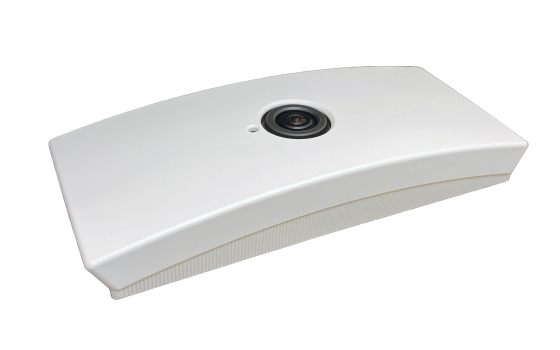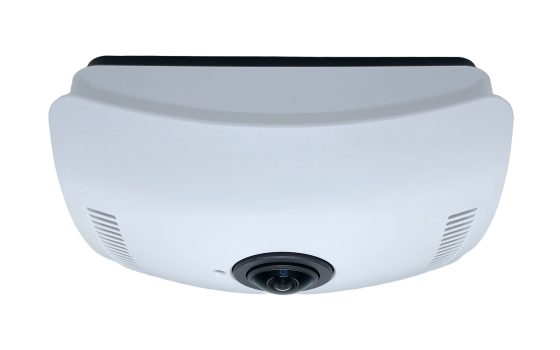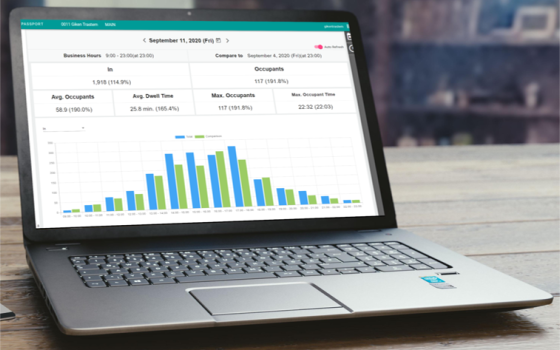CASE STUDY
How People Counting Systems Improve Library Operations
The Challenges Libraries Face

Traditional methods of monitoring library usage often fall short, leading to suboptimal resource allocation, ineffective space utilization, and unclear visitor patterns.
Libraries, as critical community resources, face a myriad of challenges in today's digital and data-driven world.
Resource Allocation and Utilization:
Libraries often struggle with efficiently allocating resources such as staff, space, and materials.Without accurate data on visitor numbers and peak usage times, it's challenging to ensure that resources are available when and where they are needed most.
Budget Constraints:
Many libraries operate under tight budgets. Justifying funding for new programs, staff, or technology can be difficult without concrete evidence of usage and demand.The lack of visitor data makes it harder to advocate for necessary financial support.
Visitor Experience:
Creating a welcoming and efficient environment for visitors is paramount.Without understanding visitor behavior, libraries may find it difficult to optimize layout, manage crowding, or ensure that popular services are adequately supported.
Strategic Planning:
Effective long-term planning requires comprehensive data.Without insights into visitor patterns and preferences, libraries can struggle to develop strategic initiatives that meet community needs and future trends.
Transform Library Management With a People Counting System
A people counting system is a technology solution designed to count and analyze the number of people entering and exiting a facility.
It is a streamlined solution for knowing how many people are in the library at any given time while allowing visitors to remain anonymous and librarians to understand usage data.
The solution uses sensors and software to collect foot traffic data, providing valuable insights into visitor behavior.
Accurate Visitor Data for Better Staff Allocation
People counting technology provides libraries with accurate data on visitor trends and peak times.
This enables library management to allocate staff more effectively, reducing wait times and improving service delivery.
For instance, during busy periods, more staff can be scheduled to handle the increased foot traffic, ensuring visitors receive timely assistance.
Reducing Wait Times and Improving Service Delivery
By understanding peak times and visitor flow, libraries can allocate staff where they are most needed, reducing wait times and ensuring visitors get the help they need promptly.
This also helps in maintaining a high level of service quality, which is crucial for user satisfaction.
Enhancing Visitor Flow and Space Utilization
Identifying High-Traffic Areas
With detailed insights into visitor flow, libraries can identify high-traffic areas and potential bottlenecks. This data allows for better planning and organization of library space, ensuring that high-demand areas are accessible and efficiently managed.
Improving Library Layout for Optimal Space Use
People counting solutions help libraries optimize their layouts to improve accessibility and convenience.
By rearranging fixtures, shelving, and study areas based on visitor flow data, libraries can enhance the overall user experience and make the best use of available space.
Visitor Data Analysis
Real-Time Insights for Immediate Action
IoT-powered people counting sensors provide real-time data on visitor numbers and movements.This capability allows libraries to make immediate adjustments to their operations.
For example, if a certain area of the library becomes overcrowded, staff can be deployed to manage the situation and maintain a pleasant environment for all visitors.
Using Data for Strategic Event Planning
Accurate visitor data is invaluable for planning and executing community events.Libraries can use this data to schedule events during times of high foot traffic, ensuring maximum participation.
The Bottom Line
By providing accurate and actionable data, these technologies help optimize operations, enhance visitor experiences, and secure necessary funding.
As libraries continue to adapt and innovate, the integration of advanced analytics will be essential in fulfilling their mission to serve the community effectively.


